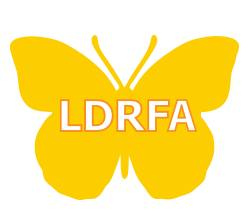Jennifer Aniston is an Emmy and Golden Globe-winning actress, director, producer, and People’s Choice actress who is best known for her role as Rachel Green on Friends. Before achieving success in her chosen field, Jennifer went through many of the typical hardships associated with Dyslexia.
Table of Contents
ToggleA poor student, Jennifer thought she wasn’t smart and couldn’t retain anything. Her feelings of insecurity about the rate at which she was learning and her struggle to make sense of the world around her plagued Jennifer throughout her childhood.
In her 20’s, Jennifer went for an eye exam. In addition to a prescription for glasses, Jennifer finally found out why she was not a good student. She wasn’t dumb after all. She had Dyslexia.
A growing awareness of Dyslexia
Many accomplished people have come forward about their Dyslexia. By doing so, they have increased the awareness of the problems associated with Dyslexia to the general public.
Unfortunately, for every individual who is identified, there are probably hundreds who experience the hardships Jennifer experienced but are unaware that they have Dyslexia and therefore, suffer in silence. (Download our dyslexia signs checklist)
We thank Jennifer for sharing her story, thus inspiring others who are personally affected and increasing the public’s awareness of this condition.
What is Dyslexia?
Dyslexia is a learning disorder characterized by difficulty reading due to problems identifying speech sounds and learning how they relate to letters and words. Also called a specific reading disability, Dyslexia is a common learning disability in children.
Dyslexia occurs in children with normal vision and intelligence. Sometimes Dyslexia goes undiagnosed for years and isn’t recognized until adulthood.
There’s no cure for Dyslexia. It’s a lifelong condition caused by inherited traits that affect how your brain works. However, most children with Dyslexia can succeed in school with tutoring or a specialized education program. Emotional support also plays an important role.
What are the common symptoms of dyslexia?
Vision, Reading, and Spelling
Most dyslexics exhibit some or all of these behaviors.
- Unable to read, write, or spell at grade level.
- Difficulty sustaining attention.
- Dizziness, headaches or stomach aches while reading.
- Confusion of letters, numbers, words, sequences, or verbal explanations.
- Reading or writing includes repetitions, additions, transpositions, omissions, substitutions, and reversals in letters, numbers and/or words.
- Reads and rereads with little comprehension.
- Spells phonetically and inconsistently.
If you are struggling with Dyslexia or Learning disabilities, LDRFA is offering an AWARD PROGRAM for ASSISTIVE TECHNOLOGY.


